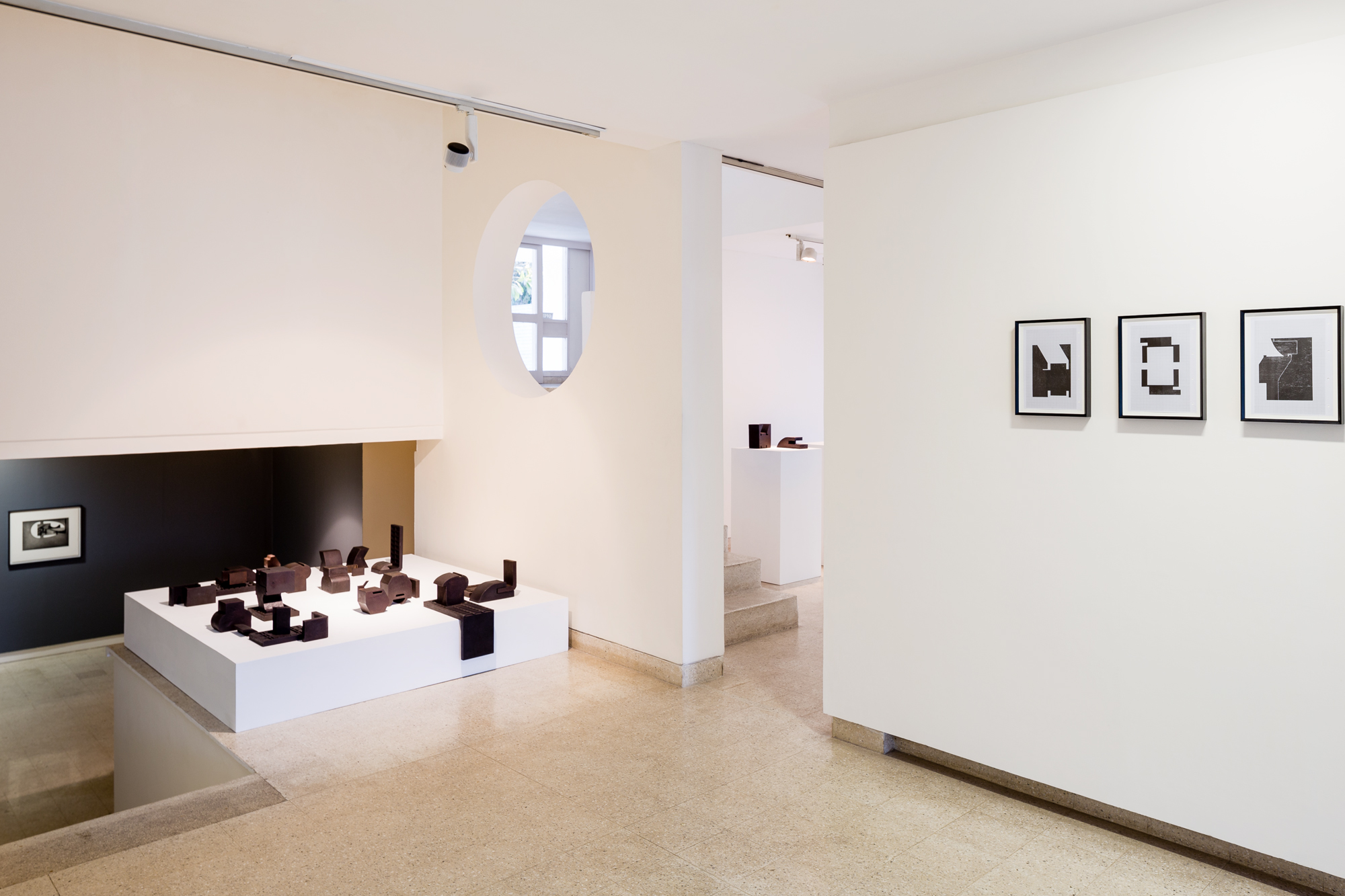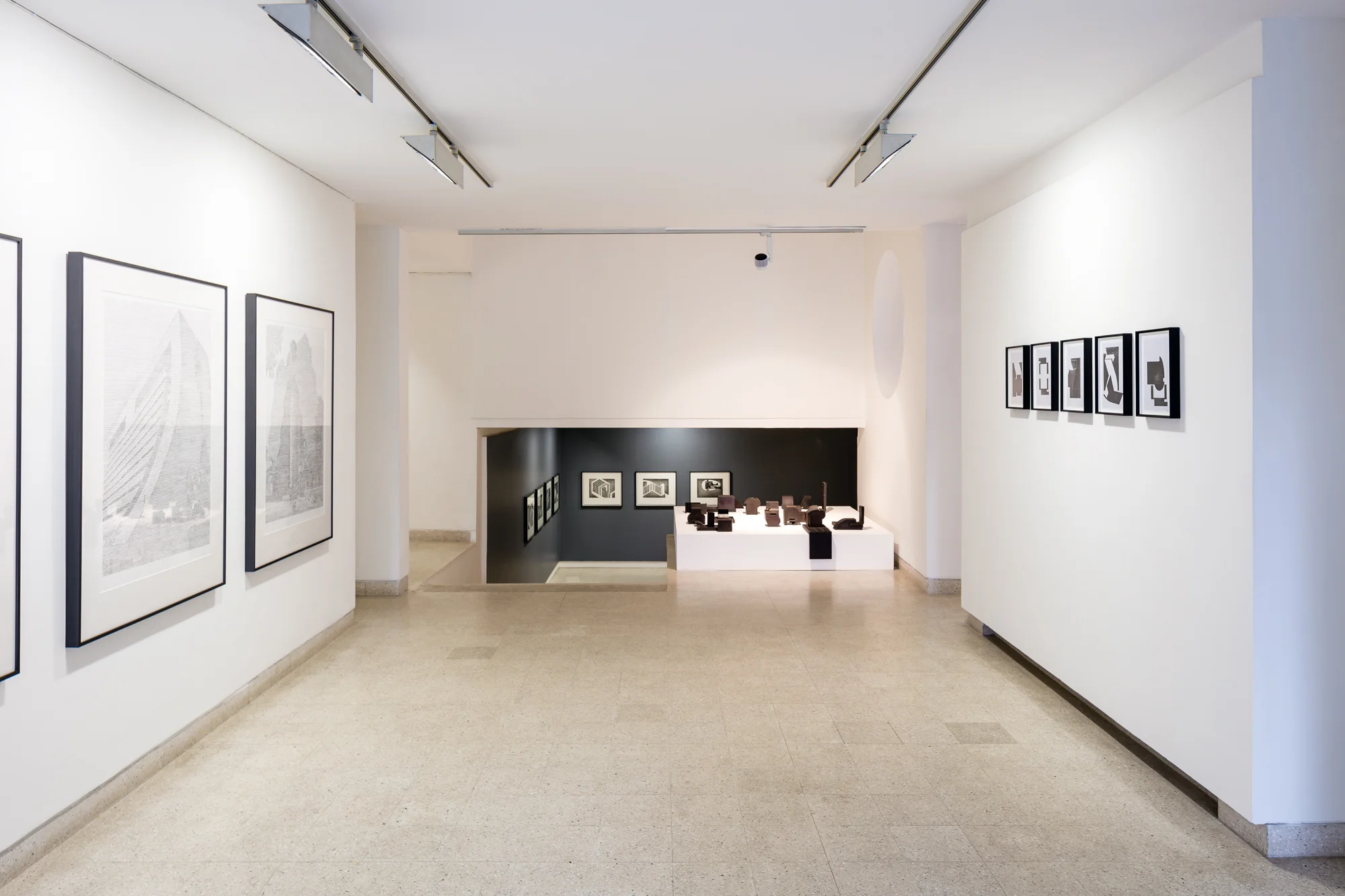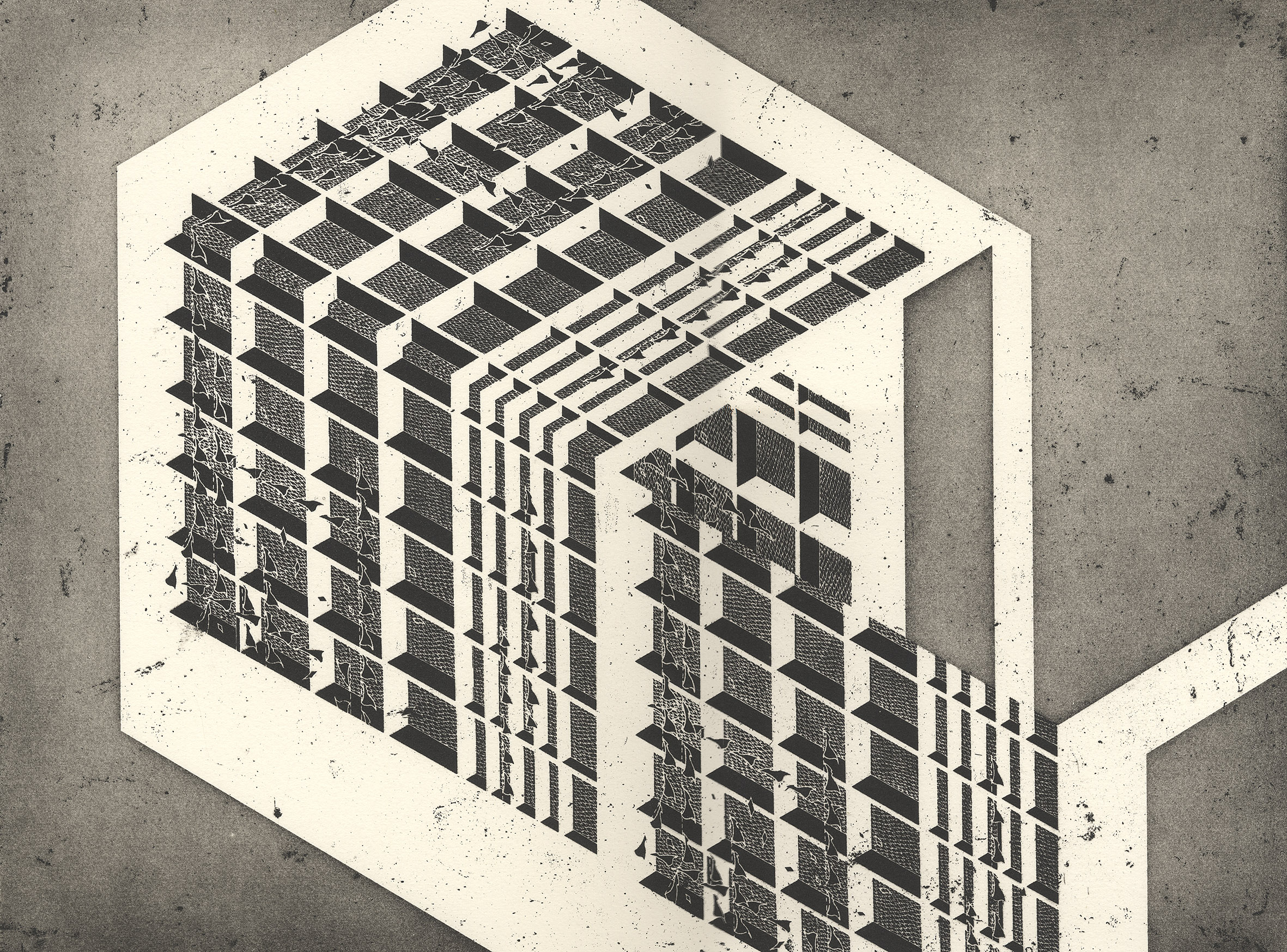Nature Morte holds second solo exhibition at the gallery by Pakistani-born, Delhi-based artist Seher Shah until 11 February 2017.
Seher Shah works with drawing, printmaking and sculpture, exploring a range of processes that draw on her background in art and architecture.
Architectural construction can be understood through a series of abstractions, building codes and measurements. These take shape first as spatial diagrams and are then employed to make the abstract thought concrete. Because they function between space and language, architectural theorists like Robert Somol claim their function to be performative rather than representational.
Seher Shah’s art draws from a similar pool of ideas. Her practice began in architecture and developed into a series of experiments that explored abstraction beyond an intended architectural function. Lines and forms began to perform within their designated space, often appearing in repetition, encountering weight and scale as well as multiple perspectives each time. These in turn, acted in response to the repetitive patterns discernable in urban planning yet constructed towards an unreal, ambiguous end. Impressively echoed in the six-part pen drawing entitled Flatlands (corner) (2016), entered through a corner elevation with multiple modular forms, an imaginary skeletal architecture introduces Shah’s ongoing solo exhibition, “Of Absence and Weight”.
Exhibiting in New Delhi after a gap of six years at Nature Morte, Shah’s current solo show hinges on the interplay between the abstract and the real in a way that urges one to think of impermanence and materiality. While speaking withArt Radar, Shah explains that her work evolves in series, each an exploration that takes a few years to resolve into a larger body of work.
In Brutalist Traces (2016) Shah reimagines aggressive modernist architecture. Built largely for institutions and corporates and typically made of concrete, considered brute or raw, modular elements are stacked and structured for functional purpose. Shah erects these buildings in frail horizontal lines of graphite that cut their enormity and austerity down to ghostly markers that eerily punctuate our landscape.
On the cusp of disappearance, these drawings lead into the sense of erasure more starkly witnessed in Mammoth: Aerial Landscape Proposals (2012), made in collaboration with photographer Randhir Singh. Taken while flying over the United States, Shah deftly inserts markers – sometimes as columns or forms of black, sometimes a line, that obliterates a part of the landscape, yet at the same time creates potential monuments. In doing so, Shah suggests the making of a new ‘history’ and focuses our attention on the temporal biography of the land we inhabit. While describing the work, she says: “I see them [inserted markers] as place-holders that aggressively ‘hold’ space but are not architectural.”
A similar eeriness is accented in the second photographic series done in collaboration with Randhir Singh, Machrie Moor(2014). Here, the megalithic stones are photographed against their barren landscape – man-made historical testimonials that mark their visceral presence and inspire Shah’s cast iron sculptures Untitled (2015). The weighty sense of mass and the bearings of time presented in these two series are rather prosaically composed in Hewn (2014), a body of woodcuts on A4 graph paper. In an extension of the sculptural forms, Shah now explores the negative space of these weighty objects on a flat surface, textured by the wood pressed on paper.
While in residency at the Glasgow Print Studio in 2014, Shah produced a series of etchings entitled Unit Objects (2014). She describes the physicality of the process where the degree of weight applied to the copper plate was as much ink as was pressed on the paper. She became particularly aware of how material deposits appeared in the forms she etched. Visually, Unit Objects revisit building elements – courtyards, elevations, façades, gardens and the like. Boundaries between interior and exterior space are left fluid, dissolved between architectural folds.
Seher Shah, like many of us, is inspired by lived experiences and memories, each stimulating an exploration of a new perspective or a revision of an earlier one. While her time in Glasgow and her travels through Scotland in 2014 influenced the visual forms and structural compositions in Unit Objects, Machrie Moor and the cast iron sculptures, a residency at BorderWork(s) in North Carolina in 2012 introduced her to structural music and the markings in musical score – traces of which are seen in Flatlands.
Rooted in architectural abstraction and the making-unmaking of landscapes, “Of Absence and Weight” also reveals historical bearings: Of the Prehistoric, Of the Industrial, Of the Modernist and Of the Imagined.






